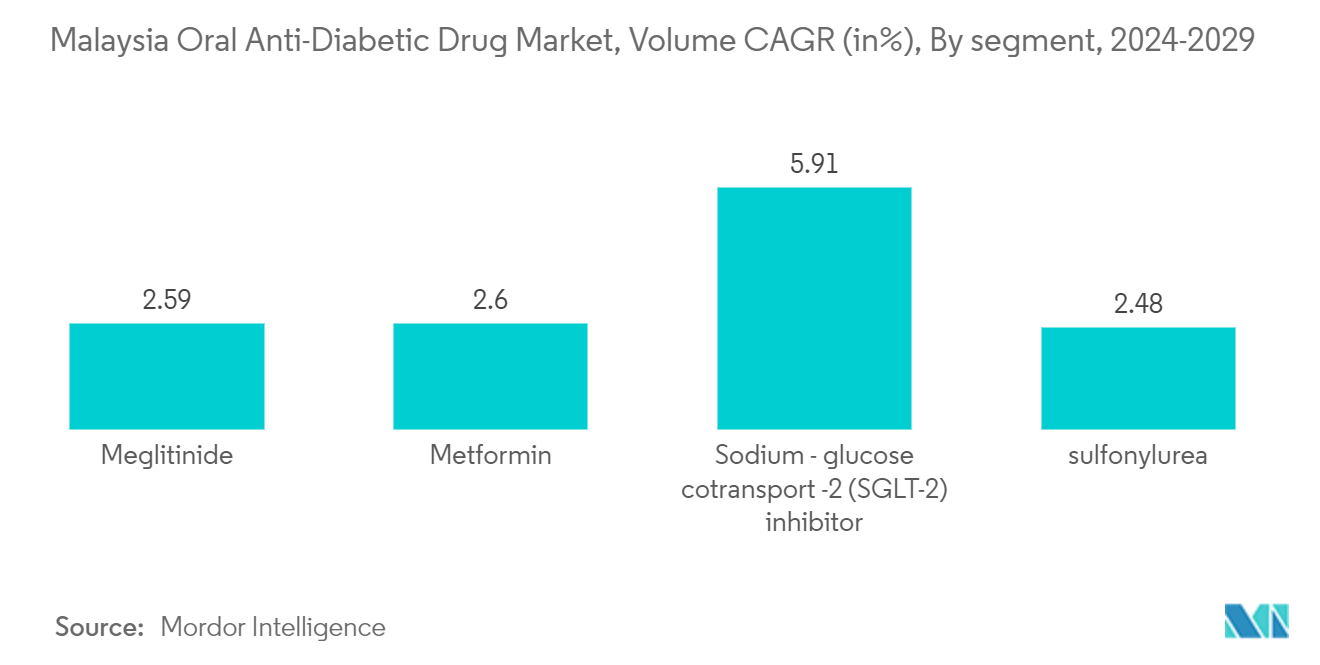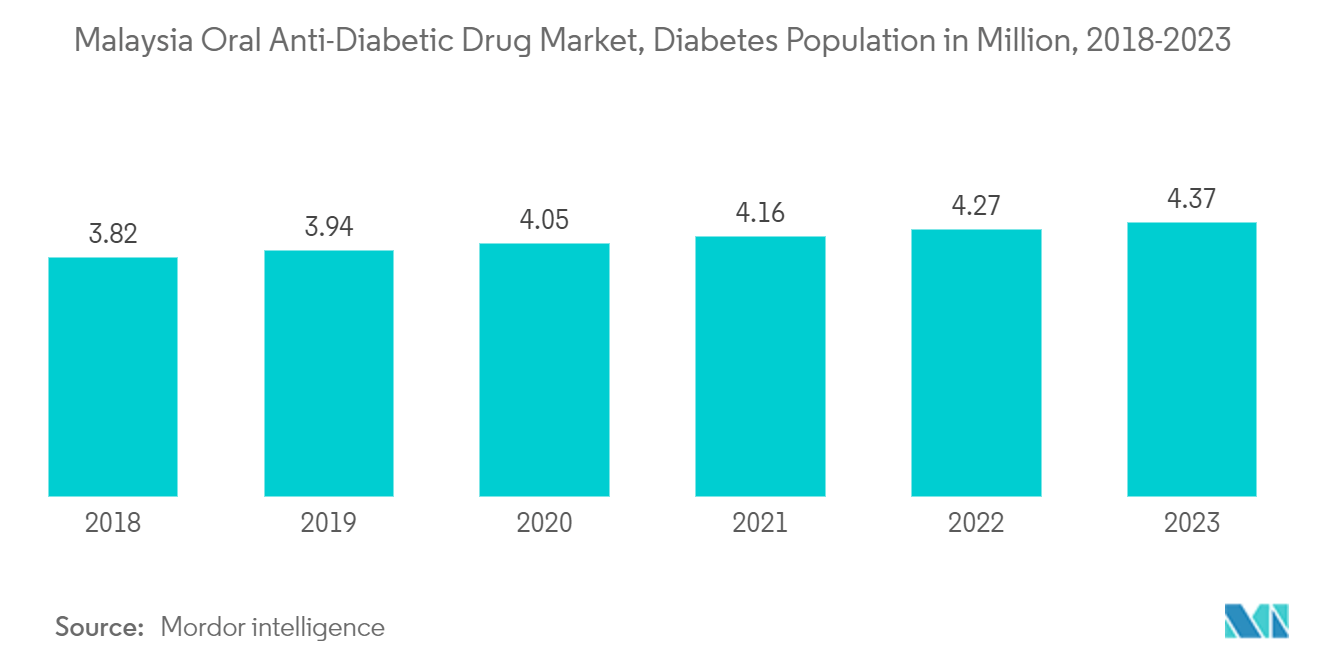Market Trends of Malaysia Oral Anti-Diabetic Drug Industry
Sulfonylurea Segment Occupied the Highest Market Share in the Malaysia Oral Anti-Diabetic Drugs Market in the current year.
Regarding revenue, the sulfonylurea segment is anticipated to lead the Malaysia Oral Anti-Diabetic Drugs Market and post a CAGR of over 1% during the forecast year.
Medications of the sulfonylurea family are used to treat type 2 diabetes mellitus. The indications, mode of action, administration, side effects, contraindications, monitoring, and toxicity of sulfonylureas are described in this activity. It will also be emphasized how crucial it is to manage sulfonylurea-using patients using a multidisciplinary approach.
The earliest type of oral diabetes treatment, sulfonylureas, dates back to the 1950s. The phenyl-sulfonyl-urea structure seen in all sulfonylureas produces the hypoglycemia effect. Sulfonylureas are used as monotherapy or in conjunction with other oral or injectable treatments by patients with type 2 diabetes mellitus.
With an annual cost of almost 600 million US dollars, Malaysia has one of the highest rates of diabetes globally and the highest rate in the Western Pacific region. Several factors, such as population growth, population aging, urbanization, and rising obesity and physical inactivity rates, influence the expanding tendency. This study was undertaken to thoroughly identify, define, and quantify Malaysia's pooled prevalence of diabetes and prediabetes in light of the rising prevalence of diabetes and its impacts.
The most effective hypoglycaemic drug for treating diabetes is insulin therapy; however, if insulin is kept improperly, its effectiveness will degrade. Diabetes and other NCDs are responsible for more than 70% of all fatalities in Malaysia. Obesity causes more than seven-fold.
AstraZeneca and the Malaysian Endocrine & Metabolic Society (MEMS) support a community project. With the assistance of various pharmacies and media partners, the first survey was conducted online. This initial survey aims to benchmark Malaysia's awareness level and pinpoint significant knowledge gaps. The 2,539 replies from this year (which have been stratified to reflect the whole population) provided valuable data that will influence how AstraZeneca and MEMS conceptualize public education programs in the coming years.

The increasing Diabetes Population in Malaysia is driving the market.
The Malaysian government has implemented diabetes prevention and control programs nationwide since the prevalence of diabetes and prediabetes is rising. To lower the prevalence of diabetes in the country, the Malaysian government should develop a comprehensive strategy and plan to enhance diabetes awareness, management, prevention, and treatment. Key contributors to the younger diabetes population in Malaysia are being overweight and obese. In Malaysia, one in two adults is overweight or obese, according to a recent NHMS.
High blood glucose or sugar levels are a sign of diabetes. It is a condition brought on by the body's inability to produce enough of the hormone insulin to regulate the level of blood sugar. It may also result from insulin resistance, which is the ineffective utilization of insulin by the body. Obesity, unhealthful eating patterns, sedentary lifestyles, and heredity influence this process. According to the National Diabetes Registry (NDR) of the ministry, 84% of diabetic patients in Malaysia who are between the ages of 18 and 40 are overweight.
The Sama-Sama program, which seeks to empower family members and carers to offer support for persons living with diabetes to enhance control and outcomes of the condition, is a project that the ministry is actively investigating. To train healthcare professionals and, subsequently, carers, the church is collaborating with the commercial sector as part of the program. The Sama-Sama program, which seeks to empower family members and carers to support people living with diabetes to improve disease control and outcomes, is now being looked into by the ministry. The government is working on a program to teach medical professionals who would then train caretakers in conjunction with the private sector.
It is therefore anticipated to drive the category expansion during the forecast period because of the factors above.

